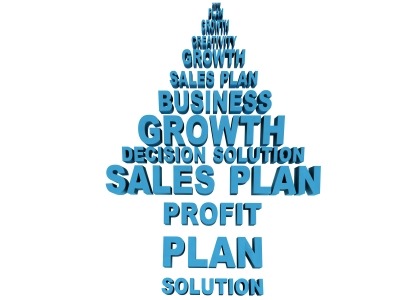 The business model is the roadmap within the roadmap that is the business plan. The business model is the blueprint for the process by which a company will make and sustain a profit.
The business model is the roadmap within the roadmap that is the business plan. The business model is the blueprint for the process by which a company will make and sustain a profit.
Unfortunately, too many aspiring entrepreneurs do not roll up their sleeves and hash out the details that form its building blocks. When devising your model, think logically about the 360 degree customer experience as it applies to engaging with your enterprise.
What does it entail?
The business model illustrates how to make the venture work as you intended. The first big question it asks you to examine is, how will you and the clients connect? Will they find you via your website? If so, how will they know that your website exists? What should you do to drive them to your site and what do you want them to find and do when they get there? The type of website that you design and your call to action are business model issues.
Or maybe you will connect with clients and prospects via referral. Who, then, will refer to you and what will motivate that behavior? Do you have, or can you create, referral relationships that will feed you a steady supply of prospective clients?
For example, if you are a florist, do you have relationships with wedding and other event planners? Perhaps you’ve worked in a busy floral shop and know a few people who will send brides and others to you. Or do you think you can depend on networking to connect you with enough prospects to get the ball rolling on sales?
Where transactions will take place is another issue the model asks you to examine. Will customers visit you at your floral shop, or will you operate as a Freelancer and go to them, toting a binder or iPad that shows examples of arrangements you can create?
For those who sell other types of products, will you sell from a physical location, will you place items into the stores of others on consignment, or will all be sold via your website?
Providers of intangible services must know how clients expect to engage in the type of transaction offered. Will an office be needed (accounting or law), or is the client’s location the preferred space (HR services or management consulting). Your model calls for you to explain why it makes sense to sell in the way you’ve chosen. As your operation grows, the business model will change accordingly, to accommodate increased demands on resources and client expectations.
Finally, your model will ask you to also address customer service issues, such as the policy for receiving payment for your products and services or the return and replacement policy, in the event that a few customers are not satisfied with a product, or if an item breaks while being shipped.
The business model impacts many facets of your planning and its fine points deserve careful consideration before you take the plunge and start spending time and money on a concept that you cannot make work. Ask yourself a few questions and devise guide posts to assist you as you develop a model for a new venture, or revamp the one you’re in now.
 Kim L. Clark is a Business Strategy and Marketing consultant. She works with clients in the for-profit and not-for-profit sectors who seek to identify and achieve business goals. Kim facilitates strategic planning sessions for businesses and not-for-profit organizations; advises not-for-profit organizations on board governance and development; and teaches business plan writing to aspiring entrepreneurs.
Kim L. Clark is a Business Strategy and Marketing consultant. She works with clients in the for-profit and not-for-profit sectors who seek to identify and achieve business goals. Kim facilitates strategic planning sessions for businesses and not-for-profit organizations; advises not-for-profit organizations on board governance and development; and teaches business plan writing to aspiring entrepreneurs.






Add Comment